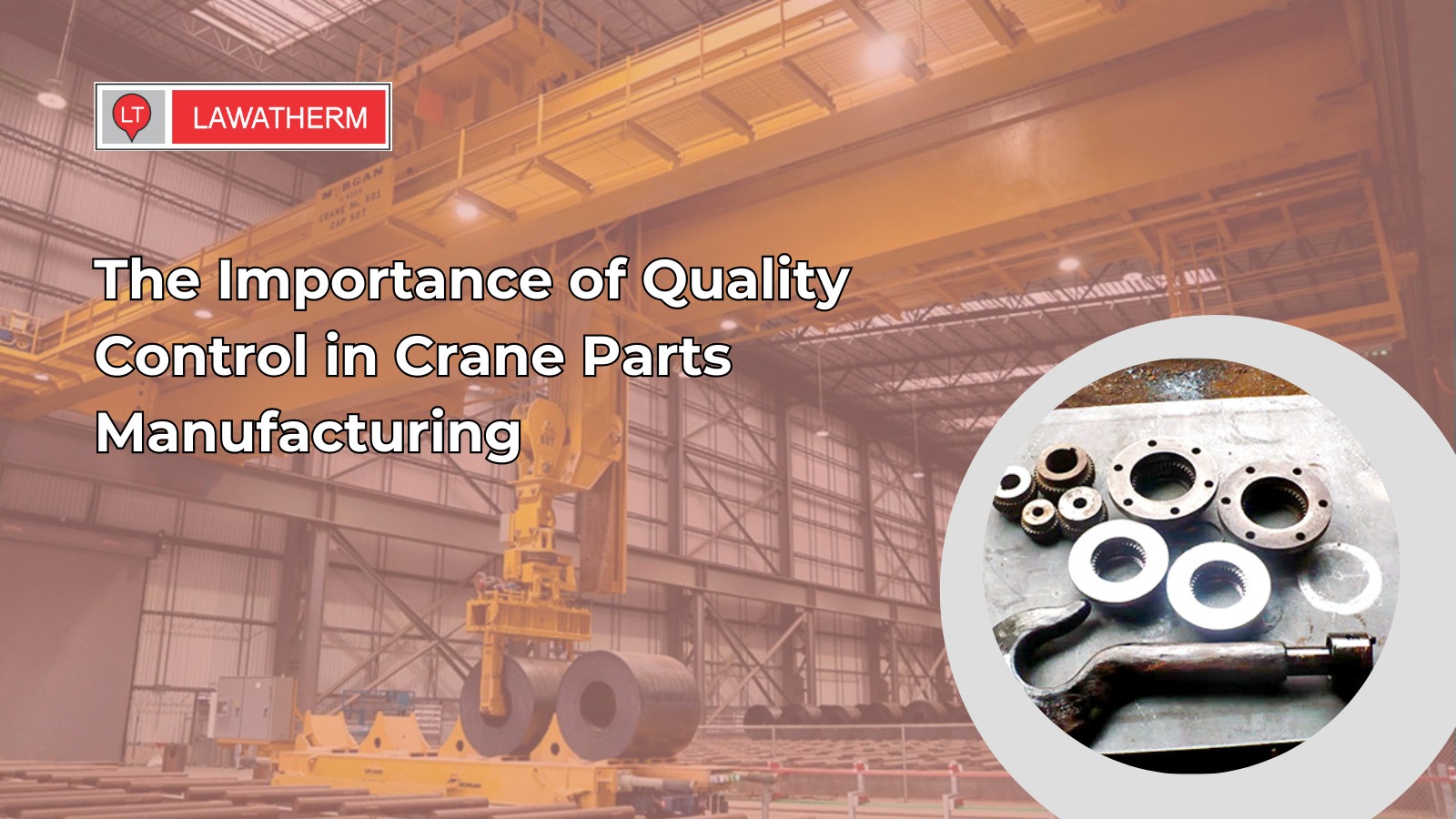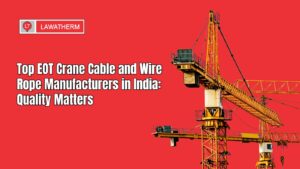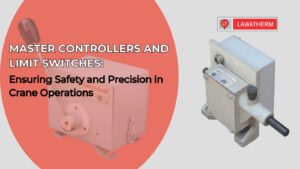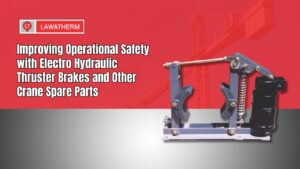In industrial operations, cranes play a critical role in the smooth and efficient functioning of steel plants, warehouses, and various manufacturing units. The EOT crane full form is Electric Overhead Traveling crane, commonly used in material handling across industrial facilities. Overhead EOT (Electric Overhead Traveling) cranes, in particular, are indispensable for lifting and transporting heavy materials within these facilities. The performance and safety of these cranes depend largely on the quality of their components, particularly the EOT crane parts, EOT crane spare parts, and mobile crane parts. As such, quality control during the manufacturing process of these essential components is of paramount importance. In this blog, we will explore the significance of quality control in the production of EOT crane parts and how it affects operational efficiency, safety, and longevity.
The Role of Quality Control in EOT Crane Parts Manufacturing
EOT crane parts are designed to withstand the heavy loads and demanding environments typical in industrial settings. The components of an EOT crane include motors, brakes, ropes, hoists, hooks, wheels, and other critical mechanical parts. These EOT crane components, such as motors, brakes, hoists, and wheels, form the core structure of the crane’s operation. Each part must meet specific performance and safety standards to ensure that the entire crane operates reliably and safely. Here, quality control serves as a crucial safeguard that ensures every component meets the stringent requirements necessary for optimal performance.
- Safety First: The primary concern when it comes to EOT crane spare parts is safety. These cranes often handle hazardous materials and can lift massive weights, which poses a potential risk if the parts fail. A defect in a single component, like a faulty brake or a malfunctioning motor, can lead to catastrophic failures that endanger both the crane operator and the facility workers.Through strict quality control procedures, manufacturers can detect defects early in the production process, preventing the delivery of unsafe parts to the market. Whether it’s checking the integrity of metal parts through non-destructive testing or ensuring the correct alignment of mechanical components, quality control ensures that EOT crane spares meet the safety standards required by industry regulations. Key safety devices like the master controller for crane allow precise movement control and help prevent accidental load drops or overruns.
- Enhanced Performance and Efficiency:- The performance of an EOT crane is directly influenced by the quality of its individual components. For instance, substandard wheels, hoists, or lifting chains can cause friction, resistance, or misalignment, all of which compromise the crane’s efficiency. Quality control involves testing components under real-world conditions to confirm their performance before they are installed on the crane. By ensuring that each part operates at peak efficiency, quality control helps reduce downtime, enhance crane speed, and ultimately, improve the productivity of the entire plant. This applies to both heavy-duty double girder models and single girder EOT crane parts, where balance and performance are equally crucial.
A typical EOT crane parts list includes end carriages, gearboxes, brakes, motors, and control panels—each categorized under specific crane spare parts names. High-quality EOT crane parts also contribute to smoother operation and less wear and tear on the equipment. This, in turn, extends the life of the crane, preventing the need for frequent repairs or premature replacements. - Longevity of Crane Components: Another key benefit of implementing stringent quality control in EOT crane parts manufacturing is the extended lifespan of the crane. Industrial environments are harsh, with cranes often exposed to high temperatures, corrosive materials, and constant mechanical stress. Components made from high-quality materials are better equipped to withstand these conditions, resulting in fewer breakdowns and maintenance needs.By rigorously testing for factors like material strength, durability, and resistance to wear, manufacturers can ensure that each part is built to last. This not only reduces the frequency of repairs but also ensures that the crane operates with minimal disruptions. Over time, this translates into significant cost savings for companies that rely on these machines.
- Cost Efficiency: While it may seem like a higher upfront cost, investing in quality control and high-quality EOT crane spares ultimately saves money in the long run. Poor-quality parts often require frequent repairs, lead to increased downtime, and shorten the life of the crane. In contrast, parts that undergo stringent quality control processes are less likely to fail and are typically more durable, resulting in lower long-term maintenance costs.Quality control can also prevent costly errors and delays in the manufacturing process. For example, by ensuring that components are made to precise specifications from the outset, manufacturers can reduce the likelihood of needing to rework or replace parts later in the production cycle. This leads to more efficient use of resources and a better return on investment.
- Compliance with Industry Standards: Another critical aspect of quality control is ensuring that EOT crane parts manufacturers comply with national and international standards. These standards, such as ISO 9001, govern the quality management systems of manufacturers and ensure that they adhere to best practices. By implementing rigorous quality control processes, manufacturers can certify that their parts meet these standards, ensuring that they are fit for use in industrial settings and meet the necessary regulatory requirements.Compliance with industry standards not only guarantees the reliability and safety of the parts but also boosts the manufacturer’s reputation in the market. For example, buyers are more likely to trust a supplier who adheres to recognized quality certifications, knowing that their products will meet their performance and safety needs.
Conclusion
In conclusion, the importance of quality control in the manufacturing of EOT crane parts cannot be overstated. From ensuring safety to enhancing performance, longevity, and cost-efficiency, quality control is a critical aspect of producing reliable, high-performance crane components. For companies seeking top-notch EOT crane spares that meet stringent quality standards, partnering with trusted crane parts manufacturers and crane spare parts suppliers like Lawatherm—whether you’re searching locally or for crane spare parts near me—is a smart choice. Lawatherm is dedicated to providing superior EOT crane parts that support the smooth operation of industrial facilities, ensuring that cranes remain safe, efficient, and durable for years to come. By prioritizing quality control, businesses can maximize productivity, minimize downtime, and maintain the highest levels of safety across their operations.




